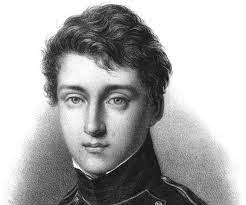
Did you know that the famous Carnot efficiency of an ideal cyclic heat engine does not require this engine to run on a Carnot cycle? It holds for *any* reversible cyclic engine!
Curious to know why? Then buckle up for a short but fun thread!
/1
Curious to know why? Then buckle up for a short but fun thread!
/1

Let’s first agree on what we’re talking about: a heat engine is a machine that turns thermal energy into mechanical work. It’s “ideal” if it runs *reversibly*. Its efficiency η tells you what fraction of thermal energy can be turned into useful mechanical work.
/2
/2
How large can that efficiency be? Easy: 100%. It’s not hard to think of processes that turn 100% of thermal energy into mechanical work. For instance, the isothermal expansion of an ideal gas turns all energy extracted from a heat bath into mechanical work.
/3
/3
Things get *much* more interesting once we want to run the engine *cyclically*. That means, an engine starts in some state, then goes chick-chock-chuck through a sequence of states that ultimately come back to the initial state—and then the process repeats.
/4
/4
We expect that during each full cycle of the engine it will take some amount of heat in and turn it into some amount of work. What’s the efficiency with which this can be accomplished? Now the answer is highly nontrivial. Let’s find out!
/5
/5
The simplest “design” of an engine that we might expect to do this is shown in this picture. We connect the heat engine to some heat reservoir at some temperature T. During each cycle it takes out a bit of heat, δQ, and then chucks out some useful mechanical work, δW.
/6
/6

Since the engine runs cyclically, no energy can be taken out of the engine itself, or for that matter left in the engine. So its internal energy U doesn’t change over one cycle. Hence, by the first law, the work put out by the machine, δW, must be equal to the heat put in, δQ.
/7
/7
But not so fast! There’s *another* function of state that matters for the engine that *also* needs to return to its initial value after a complete cycle, and that’s the entropy S. Let’s see how that affects our reasoning.
/8
/8
Once the engine takes in some heat δQ from the reservoir, its entropy increases by dS = δQ/T. That’s perfectly OK, as long as we make sure to get rid of that entropy when we finally return to the initial state.
/9
/9
How do we get rid of entropy? Easy: just expel some heat! But now we have a problem: in order to expel the gained dS = δQ/T, it seems we need to get rid of *all* the δQ we just took from the reservoir, because –dS = –δQ/T. If so, there’s no energy left to do any work!
/10
/10
But don't despair—there's a clever solution! The trick is to expel heat at a *lower* temperature, because then a *smaller* flux of heat can yield the *same* reduction in entropy!
/11
/11
This shows that we need to re-design the engine! It *must* be in contact with *two* heat reservoirs! A hot one at temperature Th and a cold one at Tc. Here’s a picture of the redesigned engine. We now take up heat δQh at temperature Th and expel heat δQc at temperature Tc.
/12
/12

With this setup, the total change in entropy of the heat engine can be made to vanish over a full cycle:
0 = dS = δQh/Th – δQc/Tc .
Observe that the first “=“ sign holds because the engine is “cyclic”, and the second holds because it is “reversible”.
/13
0 = dS = δQh/Th – δQc/Tc .
Observe that the first “=“ sign holds because the engine is “cyclic”, and the second holds because it is “reversible”.
/13
We can easily solve this equation for δQc, finding
δQc = (Tc/Th) × δQh .
If Tc < Th, then obviously δQc < δQh as well.
/14
δQc = (Tc/Th) × δQh .
If Tc < Th, then obviously δQc < δQh as well.
/14
Now that we expel less heat than we took up, δQc < δQh, there’s energy left to do work! And from the first law we know exactly how much:
δW = δQh – δQc = δQh × (1 – Tc/Th) .
/15
δW = δQh – δQc = δQh × (1 – Tc/Th) .
/15
The efficiency η of the engine is measured as the work produced divided by the heat put in. Bang for buck. From the last equation we then immediately get:
η = δW/δQh = 1 – Tc/Th .
/16
η = δW/δQh = 1 – Tc/Th .
/16
And this, ladies and gentlemen, is the Carnot efficiency! All we ever needed was an engine that runs *reversibly* and *cyclically*. And, absolutely *crucial* to the argument: we needed the fact that the entropy is a function of state!
/17
/17
Many thanks to @johncarlosbaez and @mglerner for inspiring me to write this up! I hope you enjoyed it!
/18 and end
/18 and end
• • •
Missing some Tweet in this thread? You can try to
force a refresh





